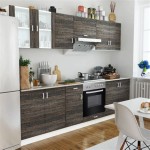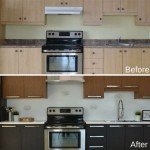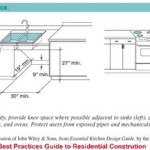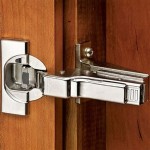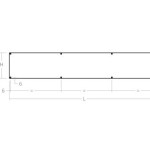Cabinet Pull Location On Door Considerations
Cabinet pulls, also known as cabinet handles, are functional and aesthetic elements that significantly impact the usability and visual appeal of cabinetry. Determining the optimum cabinet pull location on doors involves a balance of ergonomic principles, design considerations, and practical installation factors. The placement influences how easily doors can be opened, the overall style of the kitchen or bathroom, and the long-term durability of the cabinetry itself. This article explores various factors to consider when deciding on the best location for cabinet pulls on doors.
The selection of cabinet pulls and their placement is a crucial decision in the design and renovation of kitchens, bathrooms, and other spaces with cabinetry. Poorly positioned pulls can lead to awkward movements, strain on joints, and even damage to the cabinet doors. Conversely, well-placed pulls enhance the user experience, complement the design aesthetic, and prolong the life of the cabinets.
Ergonomic Considerations for Cabinet Pull Placement
Ergonomics plays a vital role in determining the ideal location for cabinet pulls. The primary goal is to position the pulls in a way that allows users to open and close the doors with minimal effort and strain. This involves considering the height of the users, the type of door, and the weight of the contents within the cabinet.
For upper cabinets, a common recommendation is to place the pull near the bottom corner of the door. This allows users to reach up and pull down on the handle, leveraging their body weight for easier operation. The specific distance from the bottom corner can vary depending on the height of the cabinets and the length of the pulls, but a general guideline is to position the center of the pull approximately 2-3 inches from the bottom edge. This placement also minimizes the risk of bumping one's head on the pull while working at the countertop.
Conversely, for lower cabinets, the pulls are typically placed near the top corner of the door. This allows users to bend down and pull up on the handle, again leveraging their body weight. Similar to upper cabinets, the exact distance from the top corner will depend on the cabinet height and pull length, but a common recommendation is to position the center of the pull 2-3 inches from the top edge. This positioning minimizes the need to bend excessively, reducing strain on the back and knees.
The placement of pulls on taller pantry doors or full-height cabinets may require a different approach. Given the increased height, it is often beneficial to install the pull at a more central location, approximately one-third of the way down from the top of the door. This provides a comfortable reach for most users and distributes the pulling force more evenly across the door, reducing stress on the hinges. In some cases, two pulls may be used on very tall doors, one at the top and one at the bottom, to provide maximum leverage and stability.
Beyond the vertical placement, the horizontal positioning of the pull is also important. Generally, pulls are placed on the stile, the vertical frame member of the door. This provides a solid mounting surface and ensures that the pulling force is applied directly to the structural component of the door. Centering the pull on the stile is often the most aesthetically pleasing and functionally sound approach, but slight variations may be necessary to accommodate specific door designs or hardware styles.
Accessibility is another crucial ergonomic consideration. When designing for individuals with disabilities or limited mobility, it is essential to ensure that the cabinet pulls are easy to reach and operate. This may involve lowering the height of upper cabinets, raising the height of lower cabinets, and selecting pulls that are easy to grip. Lever-style pulls, for example, can be easier to use for individuals with arthritis or limited hand strength. Additionally, it is important to comply with accessibility standards and guidelines, such as the Americans with Disabilities Act (ADA), which specifies requirements for reach ranges and operating forces.
Aesthetic Considerations for Cabinet Pull Placement
While ergonomics are paramount, the aesthetic impact of cabinet pull placement should not be overlooked. The location of the pulls can significantly influence the overall style and visual balance of the cabinetry and the surrounding space. The goal is to achieve a cohesive and harmonious look that complements the architectural design and reflects the homeowner's personal preferences.
Symmetry is a key principle in achieving visual balance. In many cases, positioning the pulls equidistant from the edges of the door creates a sense of order and uniformity. This is particularly important for cabinets that are arranged in a symmetrical pattern, such as flanking a range or centered on a wall. However, strict adherence to symmetry is not always necessary, and in some cases, a slightly asymmetrical placement can add visual interest and personality.
The style of the cabinet pulls themselves can also influence the placement decision. Simple, minimalist pulls may look best when centered on the stile, while more ornate or decorative pulls may benefit from a slightly offset position. The length and shape of the pull should also be considered in relation to the size and style of the cabinet door. Longer pulls can create a more modern and streamlined look, while shorter pulls can evoke a more traditional or transitional feel.
The overall design of the kitchen or bathroom should also inform the placement of cabinet pulls. In a modern kitchen with clean lines and minimal ornamentation, the pulls may be positioned in a subtle and understated manner, blending seamlessly with the surrounding cabinetry. In a more traditional kitchen with detailed moldings and decorative accents, the pulls may be used as a focal point, adding a touch of elegance and sophistication.
The color and finish of the cabinet pulls should also be considered in relation to the cabinetry and the surrounding décor. Contrasting colors and finishes can create a bold and dramatic look, while complementary colors and finishes can create a more subtle and harmonious effect. The choice of material, such as stainless steel, brass, or bronze, can also influence the overall aesthetic. Stainless steel pulls are often used in modern kitchens, while brass and bronze pulls are more commonly found in traditional kitchens.
Ultimately, the aesthetic considerations for cabinet pull placement are subjective and depend on the individual homeowner's preferences. However, by considering the principles of symmetry, balance, and proportion, and by taking into account the overall design of the space, it is possible to achieve a visually appealing and cohesive look.
Practical Considerations for Cabinet Pull Installation
Beyond ergonomics and aesthetics, several practical considerations influence the decision on where to locate cabinet pulls on doors. These factors relate to the physical installation process, the structural integrity of the cabinetry, and the long-term durability of the hardware.
The thickness and material of the cabinet door are important factors to consider. Thinner doors may require shorter screws to prevent them from protruding through the back. Solid wood doors provide a more secure mounting surface than particleboard or MDF doors. If installing pulls on particleboard or MDF doors, it is important to use screws that are specifically designed for these materials and to avoid overtightening them, as this can strip the threads and weaken the connection.
The presence of internal hardware, such as hinges or shelving supports, may also affect the placement of cabinet pulls. It is important to ensure that the screws used to attach the pulls do not interfere with any internal hardware. This may require adjusting the position of the pull slightly or using shorter screws.
The type of pull being installed can also influence the placement decision. Some pulls, such as those with a backplate, may require a larger mounting surface than others. It is important to ensure that the stile of the door is wide enough to accommodate the backplate and that the pull is securely mounted. For pulls with multiple mounting points, it is important to align the holes accurately to ensure that the pull is level and secure.
The use of templates can greatly simplify the installation process and ensure consistent placement of pulls across all the cabinet doors. Templates can be purchased or made from cardboard or plastic. They provide a guide for drilling the holes for the screws and ensure that the pulls are positioned at the same height and distance from the edge of the door.
Proper tools and techniques are essential for a successful installation. A drill with a sharp bit is needed to create clean, precise holes. A screwdriver with the correct size and type of bit is needed to tighten the screws securely without stripping the heads. A level is needed to ensure that the pulls are aligned horizontally. A measuring tape or ruler is needed to accurately position the pulls.
Finally, it is important to consider the long-term durability of the installation. Using high-quality hardware and installing it correctly can help to prevent problems such as loose pulls, stripped screws, and damaged cabinet doors. Regularly inspecting the pulls and tightening any loose screws can also help to prolong the life of the installation.

Cabinet Hardware Placement Guide

Cabinet Hardware Placement Guide

Cabinet Hardware Installation Guide At Cabinetknob Com

A Designer S Guide To Hardware Placement

Cabinet Hardware Installation Guide At Cabinetknob Com

How To Install Cabinet Handles Straight Without Losing Your Mind

How To Install New Cabinet Hardware Blog Doorcorner Com

Cabinet Pulls And Knobs Placement

An Easy Cabinet Hardware Placement Guide Tidbits Twine

4s And Skinny Narrow Shaker Hardware Placement Taylorcraft Cabinet Door Company
Related Posts

